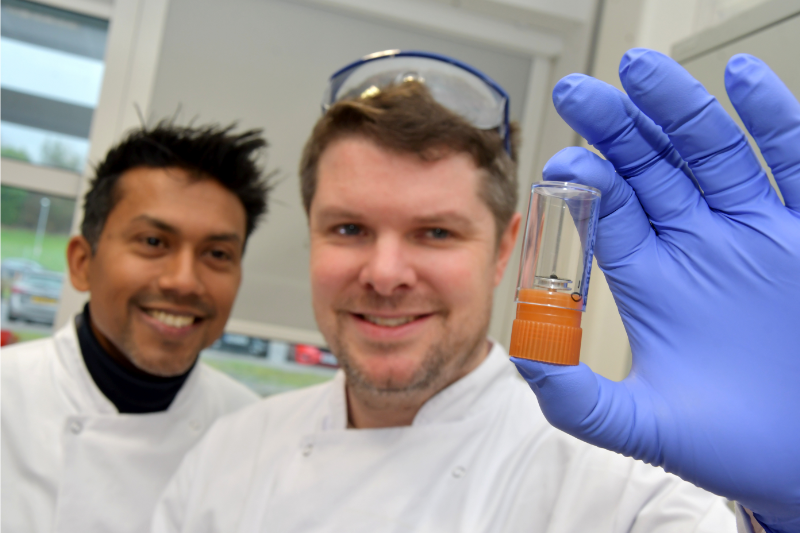
Diamond Light Source to carry out first ever synchrotron-based analysis of asteroid Bennu
A grain from the asteroid Bennu which NASA has described as the most dangerous rock in the soal system will be brought to Diamond Light Source, the UK’s national synchrotron, for scientific measurements. The grain is a small fraction of the approximately 70 grams of Bennu rock and dust brought back by NASA’s (National Aeronautics and Space Administration, USA) OSIRIS-REx mission.
It will be subject to intensive analysis at the Dual Imaging And Diffraction (DIAD) instrument in Diamond by Dr Ashley King and his team from the Natural History Museum HM and other OSIRIS-REx collaborators at the Open, Oxford and Manchester Universities.
Dr Ashley King, a planetary scientist from the Natural History Museum, specialises in using synchrotron techniques to examine samples that are literally out of this world. He will use this knowledge and the museum’s extensive mineral and meteorite collections in the study to enable the research team to make sample comparisons and have standards to help with the calculations. He was in the select group who got to put first eyes and instruments on the rocky samples from asteroid Bennu and examined them in a specially designed laboratory at NASA Johnson Space Center in Texas. This initial analysis showed the black, extraterrestrial powder to be rich in carbon and water-laden minerals, something Dr King is excited to verify using the DIAD instrument at Diamond.
He comments;
“Although this sample is small, only a little larger than a grain of sand, it is more than enough to reveal a lot of information about our solar system. Diamond is key as it enables non-destructive testing of the samples, which is vital. The Bennu samples will be used to test theories that suggest asteroids like Bennu may have been involved in delivering key components to the young Earth system some 4.5 billion years ago. Potentially, it’s how we got the water in our oceans and some of the compounds that were necessary to kick-start life. Our experiments are focussed on understanding the mineralogy, composition and textures of the samples to be able to tell the story of Bennu’s history. Using DIAD we’ll be able to explore the mineralogy of Bennu in 3D.”
Dr Sharif Ahmed, Principal Beamline Scientist on Diamond’s Dual Imaging And Diffraction (DIAD) beamline, adds;
“What sets DIAD apart is its unique ability to measure the chemical composition and 3D internal structure of the sample at the same time and location. We achieve this by combining X-ray powder diffraction and X-ray computed tomography, which enables DIAD to extract information that no other instrument can. We are super excited about being one of the first instruments in the world to analyse a piece of Bennu. I cannot wait to see what insight DIAD reveals.”
Prof Gianluigi Botton, CEO of Diamond Light Source, concludes;
It is amazing to think that these samples have come all the way from the asteroid through a feat of engineering that got the OSIRIS-REx mission to be such a success. Next, it’s wonderful to see our scientists be able to play their part in this important worldwide collaboration. The teams involved believe that this research will accelerate our understanding of how planets formed and how life itself began as asteroids are considered the building blocks of our solar system.
Scientists in Britain and across the world hope to report on their early work at the Lunar and Planetary Science Conference (LPSC) in March. Two major overview papers are also expected to be published at the same time or shortly after in the journal Meteoritics & Planetary Science.
Nasa plans to put most of the Bennu sample straight into the archive to preserve for future generations – for scientists who may not even have been born yet, to work in laboratories that don’t exist today, using instrumentation that still awaits invention.